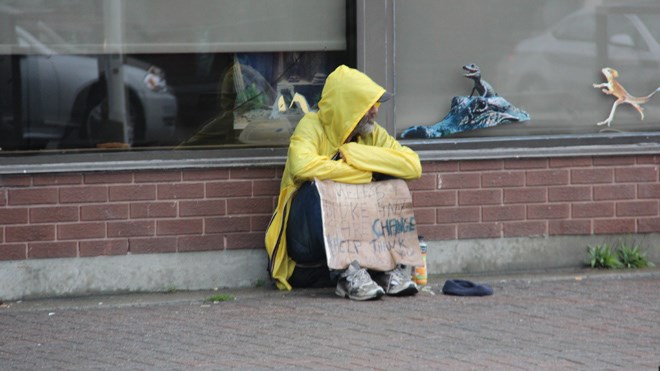Without a clear roadmap, how do you reach your destination?
When we look at Greater Sudbury’s Downtown Task Team (DTT), this is the question we have to ask ourselves.
What, ultimately, is the team’s goal? Is it to create temporary solutions to problems caused by the pandemic? Is it to create more housing capacity for low-income or no-income people? Is it to end homelessness for good in this city?
The reason we feel compelled to ask this question is it is not immediately clear to us what the DTT is trying to achieve.
In recent weeks, Sudbury.com reporter Jenny Lamothe has twice reported on groups that work directly with the homeless and virtually homeless being denied representation on the task team. First, the Elizabeth Fry Society, a member of the Homelessness Network, told us how they were denied a seat at the table. Then, the Samaritan Centre told us the same story.
When asked why groups that actually work with the homeless and which have first-hand knowledge of the challenges facing this demographic were excluded, the reasons provided by Mayor Brian Bigger for these denials are unsatisfactory.
The mayor gave two primary reasons: 1. There were already so many people on the DTT, conducting virtual meetings was challenging, and; 2. Some members of the team are interconnected with local homelessness groups, the implication being the presence of those groups was unnecessary.
We have reviewed the current members of the task team. You can see them for yourself at the end of this story.
As you can see, the DTT has representation from elected officials, bureaucrats, the police, the health care sector and the business community. There are 21 people listed, but at least 30 took part in the first meeting and presumably a similar number for the most recent meeting.
If you are addressing homelessness but cannot find a seat at the table for even one representative from groups that actually work with the homeless and understand the challenges, if you lack all the information needed to understand the issue, how can you possibly make informed decisions?
If the team is so large as to be unwieldy, perhaps it is time to pare it back to the A-Team, including representation from at least one group that works directly with the homeless.
After the Nov. 25 DTT meeting, the team issued a statement to the media that was full of platitudes and positioning statements, but, as Sudbury.com pointed out, the statement lacked any real substance. There was nothing concrete included therein beyond a restatement of previously reported information on efforts to address garbage, graffiti and lighting.
Has the group made some progress? It has. Eating and washroom facilities are now available at the YMCA.
The federal and provincial governments have homeless funding in place. The feds have even set aside $1 billion for municipalities to purchase properties for rapid-response homeless shelters as part of its pandemic response.
The DTT cannot solve the city’s homelessness issue. It is a much bigger challenge than one small city can tackle alone.
But the city can get smarter about how it proposes to address the challenge before it. It can identify achievable goals and make sure we, the public, understand those goals and the rationale that drives them.
And once those goals are identified, the DTT can actually begin heading in a clear direction, instead of the apparently scattershot approach it has taken thus far.
If you do not know where you are going, how can you get there?
Sudbury.com’s editorial position is determined by an editorial board, consisting of senior members of the editorial team.
